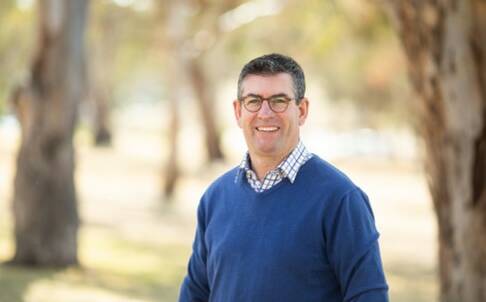
The transition to net zero in the Australian economy by 2050 is underway.
Subscribe now for unlimited access to all our agricultural news
across the nation
or signup to continue reading
Agriculture accounts for approximately 15 per cent of Australia's total greenhouse gas emissions and the sector will inevitably require action to reduce its impact.
Agriculture is unique among industry sectors as we can deliver on both carbon reduction and carbon storage.
As the net zero transition accelerates, farmers will be exposed to a multitude of commercial opportunities, but also risks.
It's been dubbed a 'confusopoly'.
Producers have an appetite to embrace carbon-smart initiatives but don't know where to start, who to trust and how to engage.
In an effort to quench the thirst for knowledge about all things carbon, AgriFutures Australia launched the Carbon Initiative Program, a million-dollar commitment fuelling 15 pioneering research projects.
The results are in.
The projects explore novel approaches to carbon storage, greenhouse gas emission reduction and emission avoidance, as well as methods to drive awareness, overcome barriers and develop market pathways for farmers, fishers and foresters.
One of the reports by the Australian Farm Institute titled 'Carbon development pathways for Australian producers' outlines the development of the Carbon Opportunity Decision Support Tool This tool is designed to assist Australian land managers in better understanding carbon farming opportunities and to identify which ones might be best suited for their enterprise.
Other visionary research from Deakin University explores how Australian livestock producers can grow freshwater plants and algae on their farms to reduce methane emissions in ruminant livestock.
Just like Asparagopsis taxiformis (red seaweed), this inland alternative has shown promising potential and could reduce the logistical complexities from marine seaweed.
Of course, what becomes obvious from reviewing the results of the 15 research projects is the myriad of opportunities the industry has access to.
So the question is: 'where to start?'
The research from Common Capital encourages producers to begin with carbon benchmarking to get an indicative baseline of emissions.
Indeed, once producers understand their enterprises' emissions, they can consider strategies to manage on-farm sources and sink. And from here, the options are endless.
And this is the reason why there are so many farmers tossing and turning in their beds at night.
This may not lead to a better night sleep but the simple truth is there is no 'one-size-fits-all' approach when it comes to managing carbon on your farm.
It makes no sense to feed your almond trees red seaweed to reduce your emissions.
The effectiveness or suitability of different strategies will vary dramatically by farm system and producers should carefully consider their individual context.
There are already solutions out there. Your job now is to engage, learn and connect. Continue to stay engaged with reputable research. Learn from the insights and journeys of others. And remain connected with all things carbon.
AgriFutures Australia will continue to play a pivotal role in the connection piece of the puzzle. Connecting the research through the Carbon Initiatives Program to ensure cross-industry learnings and insights are made aware.
Connecting the insights through events such as Carbon Conversations. And connecting the dots through our Carbon Conversations LinkedIn group.
And whilst the carbon pathway may seem cloudy, the goal of net zero by 2050 is absolutely clear.
- Michael Beer is the rural futures general manager at AgriFutures Australia

